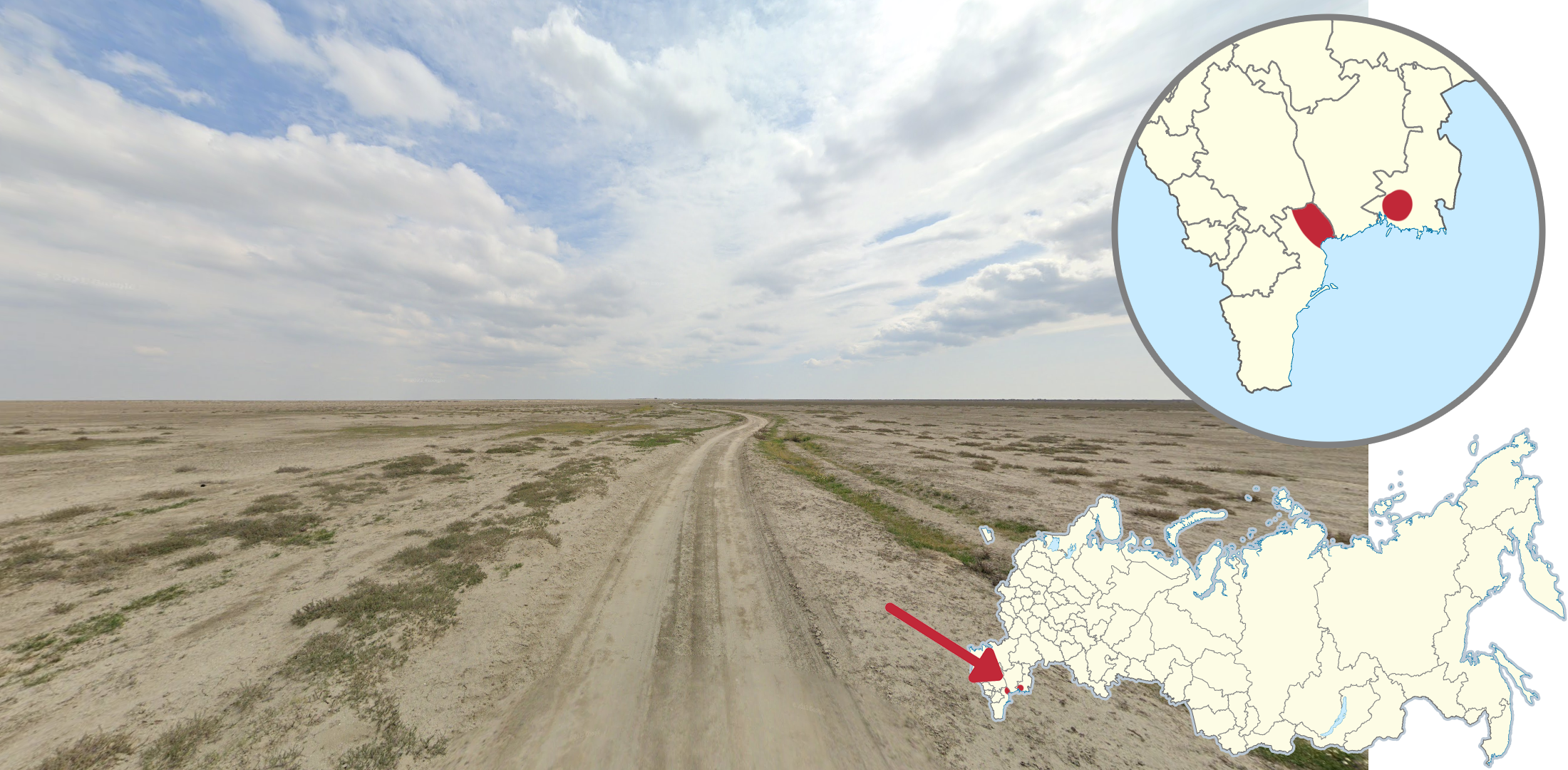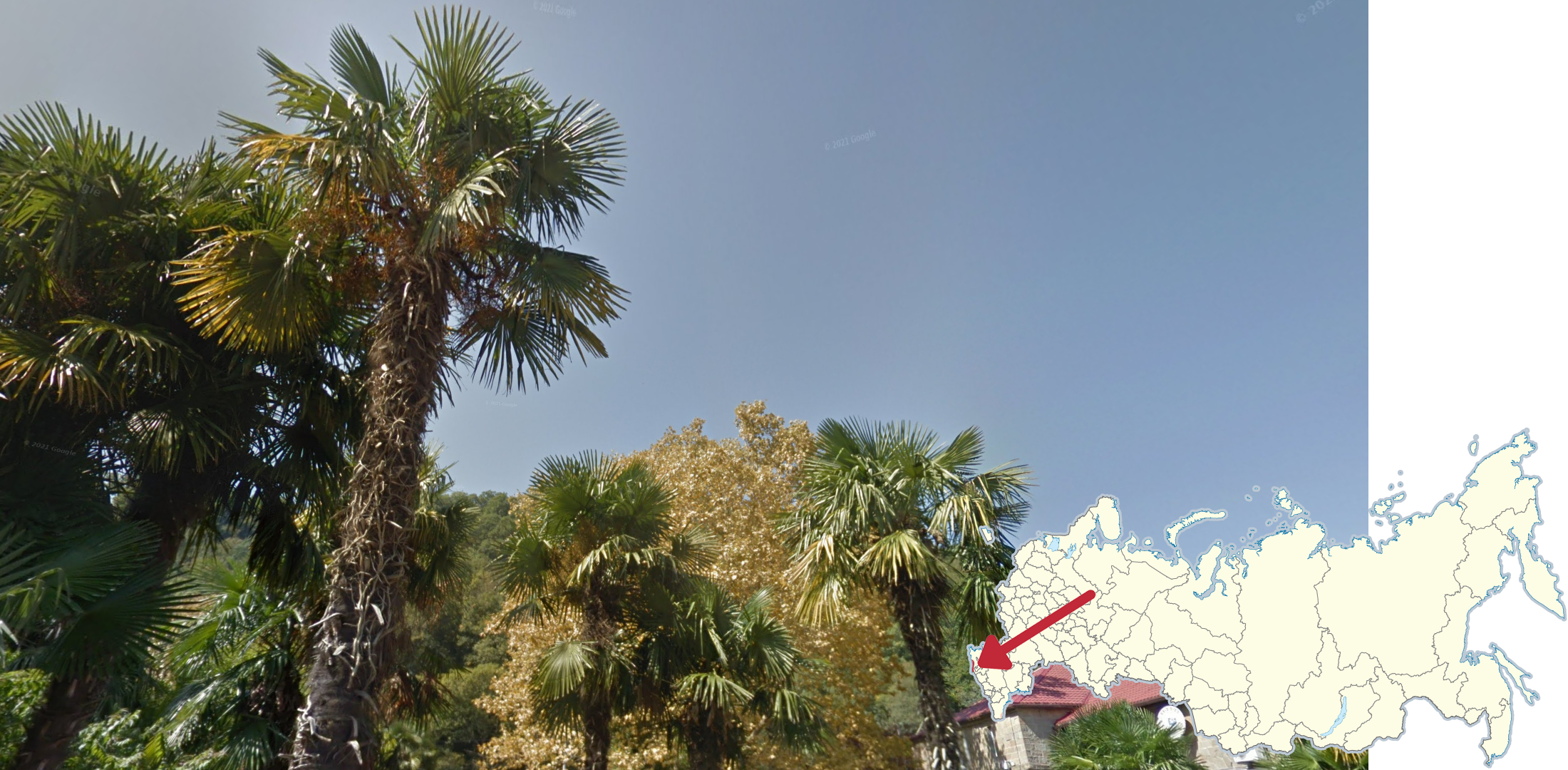
Russia
The following section contains images showcasing the distribution of car and coverage metas, such as antennas, seasons, and camera generations. If you want a more in-depth explanation, you may use this document by Finbarr.
This is the full coverage map of Russia. It can be helpful to know areas where there isn’t any coverage. The coverage is notably very sparse in the east and north.
You can check out the extent of the official coverage on this website.
White car long antenna is found in many places, most commonly in southern Chelyabinsk, on snow coverage around Novosibirsk, and in the Far East beginning in Amur Oblast.
NOTE: While Kamchatka technically has a silver car (with a B type antenna), it often appears white and is part of the small group of exceptions to black and white.
The A-type short antenna has its highest ridge on the right. Notable areas for this antenna are around Kaluga, Orenburg, and Krasnodar.
The B-type short antenna has its highest ridge on the left. This antenna is wide-ranging, but it is most notably found near Nizhny Novgorod, Elista, and Yekaterinburg and Tyumen.
The B-type pronounced antenna is the same as the B-type antenna but the ridge is more “rectangular”. This antenna is fairly limited, only being found commonly in Moscow Oblast, Kurgan Oblast, near Krasnoyarsk, and southwest Krasnodar.
The C-type short antenna can be thought of as a low A-type or a “twisting antenna” with the ridges being further from the top. It is found north and east of Moscow, with the furthest south being Rostov Oblast.
The blurred short antenna is visibly blurrier than any of the other short antennas. It is mainly found in two major clusters around Ufa and from Stavropol to Makhachkala.
The A-type long antenna has its highest ridge on the right side. Notable areas include Leningrad Oblast, Republic of Karelia, and Vologda Oblast. Almost all the white car long antenna coverage is A-type, so checking for A-type can also help confirm car colour.
The B-type long antenna has its highest ridge on the left side. Notable areas include Yaroslav to Vladimir, Tula Oblast, and much of the coverage near Tuva and Irkutsk.
NOTE: There are two other long antenna types, referred to as CA and CB, but due to their relative lack of usefulness they will not be covered here.
Blurred long antenna is visibly blurrier than other long antenna cars, and is a strong clue for Sakhalin and various roads in the east, as well as much of Khanty-Mansi. On the other end there exists a blurred antenna in far western Bryansk Oblast and some of Tula Oblast.
The tilted short antenna is visibly tilted to the left and can be found primarily on a diagonal from St. Petersburg down to Volgograd, with exceptions in Stavropol and Ufa. Since the ridge is on the same side, it can sometimes appear as the A-type short antenna.
A large, red brake light is common in Kaliningrad, however it can also be found in some older coverage in western Russia.
Generation 4 coverage is quite extensive and is found in most federal subjects in the country. Notably, areas like the Altai mountains and most of the Far East lack Generation 4 completely. Knowing where Generation 4 can be found isn’t the most helpful at the beginner level; other clues like season and car are more important. The dark red signifies areas where all of the coverage is Generation 4.
Winter Generation 4 is most common in the south of Russia, ranging from Ryazan all the way down to Kabardino-Balkaria and Dagestan. Winter can appear differently depending on the month (and even time of month the coverage was taken) which can be used to further regionguess.
Spring Generation 4 is common in several distinct places, such as around Kemerovo and Krasnoyarsk, Orenburg and Kamyshin, around Lipetsk, and in Moscow city. Differentiating these places typically comes down to landscape, as they tend to be fairly distinct.
Summer Generation 4 is the most common coverage in generation 4. It is pretty much everywhere except in the south and some of the east, but can be further subdivided by car colour.
Autumn Generation 4 is quite rare and only found around Kazan and a few roads in Murmansk, as well as some of Ulan-Ude.
Generation 4 red car is the most common generation 4 car meta, found primarily east around Khanty-Mansi, as well as along the main highways down to Irkutsk and Ulan-Ude. There is also a sizable patch near Penza and Tatarstan, as well as Rostov-on-Don.
Generation 4 white car is found in the May coverage near Lipetsk, in Moscow city, and most notably across all the coverage north of Berkatit in the Sakha Republic and Magadan.
Generation 4 black car is found mostly near Moscow, Tver, and Voronezh, with some also existing in Tatarstan and less commonly in the south.
Vorkuta in far northern Komi Republic has dead-looking winter coverage, sometimes with reddish soil. The apartment blocks will typically have large northern apartment block foundations.
Languages
Infrastructure
Cobblestone pavement is notably common in Kaliningrad, Nizhny Tagil in Sverdlovsk, and Kizel in Perm Krai.
Extended insulator bars on poles are notably found in southern Chelyabinsk Oblast and eastern Orenburg Oblast, as well as southern Kemerovo Oblast.
Utility poles with a mesh framework are usually found in Petrozavodsk, but can much less commonly be found in cities like Tolyatti.
This fence with a thin rounded rectangular design at the top is found in the cities of Syzran, Tolyatti, and Samara. In Tolyatti it will commonly be painted yellow.
In addition, here are some resources to help you practise Russia:
Plonk It Russia (map link) - This map contains locations for practising each meta in the Plonk It Russia guide from step 2 to 3.
A Learnable Russia (map link) - This map only contains distinct and learnable regions and roads of Russia.
Car and Seasonal Meta Document (document link)























































